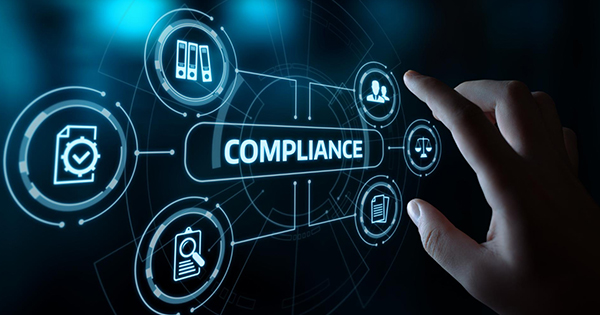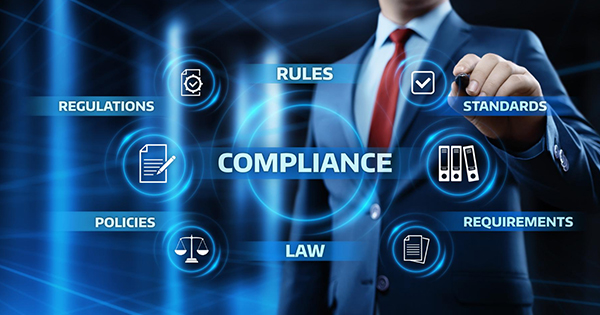
New York City, New York Oct 15, 2025 (Issuewire.com) - AI Has Become the New Compliance Frontier
Artificial Intelligence has moved beyond being a productivity accelerator its now a compliance disruptor.
The recent DeloitteAustralian Government incident, where Deloitte agreed to repay AUD 440,000 after using generative AI in an official report without disclosure, is a stark reminder that compliance lapses are no longer limited to negligence or fraud, they can stem from automation without oversight.
AI doesnt just increase efficiency, it amplifies both value and vulnerability, observes Narendra Sahoo, Director at VISTA InfoSec. The Deloitte episode underscores how quickly ethical shortcuts can evolve into regulatory breaches when organizations dont recalibrate their governance models.
In 2025, the most sophisticated compliance failures are emerging not from intent but from invisibility systems that operate too intelligently, too autonomously, and too opaquely.
1. The Shadow Data Problem: Pasting Secrets Like Candy
The 2025 Cybernews survey revealed that nearly 59% of employees use unapproved AI tools, and most have shared sensitive corporate data in them. This points to a structural flaw: data classification and DLP systems built for conventional environments cant detect semantic leakage the unintentional exposure of contextual information through AI prompts.
How Organizations Can Respond:
- Establish AI Data Boundaries
- Integrate AI-Aware DLP
- Map Data Flow to AI Touchpoints
In our experience working with clients across finance and SaaS, we have seen teams unaware that their sensitive datasets were being used in external AI model testing environments a discovery made only after structured AI data lineage mapping. Once visibility was established, remediation became achievable and measurable.
You cant protect what you cant trace, notes Sahoo. AI governance begins with understanding whats leaving your perimeter and why.
2. The Trust Illusion: AI Said So Compliance
Across industries, AI has now quietly become a final authority in compliance-related workflows - drafting reports, cross-mapping policies, and even interpreting regulations. The illusion is believing AI-generated content is automatically accurate or compliant. In truth, most large models are trained on open data, not legal logic or jurisdiction-specific rules.
A 2025 KPMG report found that 57% of employees have made work errors due to AI-generated outputs, while nearly half said they werent sure if using AI tools was even allowed in their organization.
The Corrective Path:
- Model Output Governance (MOG)
- Explainability by Design
- AI Assurance as an Ongoing Control
When auditing a healthcare analytics firm, we found that compliance summaries auto-generated by an AI assistant were referencing outdated HIPAA provisions. Implementing a Model Output Validation Framework not only corrected errors but also re-established internal confidence in AI-enabled decision-making.
More On Newsinterestcorp ::
- Award-Winning Poet Silas Toney Inspires Through Change in "Seasons: The Beautiful Transition"
- PortaSauna Launches European Operation with Finnish Sauna Influencer Nina Laitina
- Charl Ceronio, MD: A Champion for Rural Healthcare in Louisiana
- Struggling to Scale? WendyY Bailey’s New Book, BIG WINS! Offers Business Coaching
- Samantha Hurley, Recognized by BestAgents.us as a 2025 Top Agent
3. The Hidden AI Supply Chain
Most enterprises now run on unseen AI infrastructure pretrained models, public datasets, and opaque API chains. This creates derivative risk: non-compliance not from internal failure but from the misconduct of upstream AI dependencies.
Steps Toward Transparency:
- Maintain an AI Bill of Materials (AIBOM)
- Audit Model Provenance
- Review Vendor Assurance Controls
We have seen, during AI governance reviews for global fintech and logistics companies, that undocumented use of open-source LLMs often led to cross-border data transfers breaching GDPRs Article 44 restrictions. Establishing an AIBOM helped those organizations detect and later prevent such exposures before regulatory audits did.
4. The Cloud Mirage: When Hosting Isnt Compliance
Cloud adoption hasnt erased compliance complexity it has restructured it. The assumption that SOC 2 or ISO 27017 certification of a CSP automatically extends to hosted workloads is a recurring misunderstanding.
Effective Countermeasures:
- Regulatory Mapping
- Perform Cloud Compliance Gap Audits
- Demand Transparent CSP Attestations
In one cloud-first enterprise we worked with, data residency obligations under the EU AI Act were assumed to be the providers duty until internal audit clarified that residency control rested with the data owner.
5. The Deepfake Crisis: Trust is Now Synthetic
Nearly half of global firms report being targeted by deepfake identity attacks. From onboarding fraud to executive impersonation, the attack surface has shifted from data theft to identity manipulation.
Response Strategies:
- Implement Liveness and Challenge-Response Biometrics
- Deploy AI-Based Fraud Detection Tools
- Maintain Synthetic Identity Incident Protocols
6. The Vanishing Record Problem
AI-driven chat tools, Slack threads, and ephemeral communications have eroded audit evidence. Even in financial and healthcare contexts, critical decision trails are dissolving in transient chat windows.
Governance Imperatives:
- Centralized Archiving for All Communication Channels
- Immutable Evidence Retention
- Periodic eDiscovery Simulations
7. The Avalanche of Regulation
The EU AI Act, Indias DPDP Act, and a growing wave of state-level privacy laws have created a multi-jurisdictional compliance labyrinth. Many firms now face compliance fatigue.
The Adaptive Approach:
- Adopt Continuous Compliance Models
- Leverage RegTech Automation
- Unify Frameworks Under a Converged Assurance Model
8. The Performance of Compliance: Audit Theater
Beautiful policies. Broken practices. Shadow AI tools and unsanctioned scripts continue to erode documented governance. This isnt policy failure its culture failure.
What Works:
- Behavioral Compliance Monitoring
- AI Misuse Simulations
- Training Reimagined
Redefining Compliance for the AI Age
The Deloitte case was a headline, concludes Sahoo, but its also a mirror. Every organization using AI without explicit accountability frameworks is one decision away from the same mistake.
AI governance is no longer a project; its a perpetual operating condition. The challenge is not AI itself its the governance lag that follows it. Organizations that internalize compliance as a real-time, behavioral, and data-driven discipline, not a documentation ritual, will define the next era of trust in AI.
Behind the Insights
This article draws on insights from VISTA InfoSec, a global cybersecurity and compliance advisory firm specializing in data privacy, AI governance, and integrated assurance frameworks across SOC 2, ISO 27001, PCI DSS, HIPAA, and GDPR. Through over 20 years of independent audit experience, VISTA InfoSec has assisted organizations worldwide in building AI-resilient compliance ecosystems bridging the widening gap between regulatory obligation and operational reality.


Source :VISTA InfoSec LLC
This article was originally published by IssueWire. Read the original article here.

